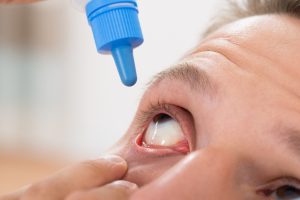 Schirmer’s test is specifically designed to help eye doctors diagnose dry eyes. The purpose of this test is determining how quickly your eyes produce tears. In dry eyes, the ability to produce tears is limited. Tears are important as they keep the eyes moist and healthy.
Schirmer’s test is specifically designed to help eye doctors diagnose dry eyes. The purpose of this test is determining how quickly your eyes produce tears. In dry eyes, the ability to produce tears is limited. Tears are important as they keep the eyes moist and healthy.
The Schirmer’s test can go by several names, such as dry eye test, tear test, tearing test, or Basal secretion test. So it doesn’t matter how your doctor refers to it, it’s all the same procedure.
Advertisement
Below we will outline the reasons for a Schirmer’s test, how the test is performed and what to expect during the test, along with the meaning of the results.
Reasons for performing a Schirmer’s test
If you’ve been experiencing blurred vision, stinging, burning sensation, increased irritation, eye fatigue, light sensitivity, redness, feeling of having something in your eye, and periods of excessive tearing, then your eye specialist will want to perform a Schirmer’s test in order to accurately diagnose dry eye syndrome.
Schirmer’s test may also be performed if you are producing too many tears. In this case, the test can be done either on one eye or on both eyes.
The test results will help your doctor identify the cause of your tearing problems. Some possible causes include allergies, aging, diabetes, vitamin A deficiency, and infections, to name a few.
How Schirmer’s test is performed
A Schirmer’s test is performed by the healthcare professional placing specialty paper inside the lower eyelid of one or both eyes. Prior to this, you will receive numbing eye drops, so that your eyes do not become irritated by the paper itself to avoid false results.
Most commonly, the patient sits with their eyes closed for about five minutes. Eyes should not be closed tightly or should not be rubbed while the test is in progress, or else it will yield false results.
After the five-minute period, the paper is removed and the doctor measures moistness of the paper.
There is no specific preparation that a patient will have to complete for a tear test. They will simply have to remove glasses or contacts, and that’s it.
What to expect during a Schirmer’s test and results
Advertisement
For the most part, the Schirmer’s test is painless, but some patients may find the paper irritating, especially if they have not received numbing drops. The numbing drops themselves may sting for a second, but that clears up soon after they are applied.
Results from a Schirmer’s test will reveal if you have excessive or insufficient tear production. A normal result is when the paper contains more than 10 mm of moisture. Less than 10 mm indicates dry eye syndrome. If the eyes produce more than 10 mm of moisture, then your doctor will want to further investigate the cause of your excessive tearing.
Based on the results, your doctor may conduct further testing to uncover the underlying cause of your dry eyes to treat them properly.
